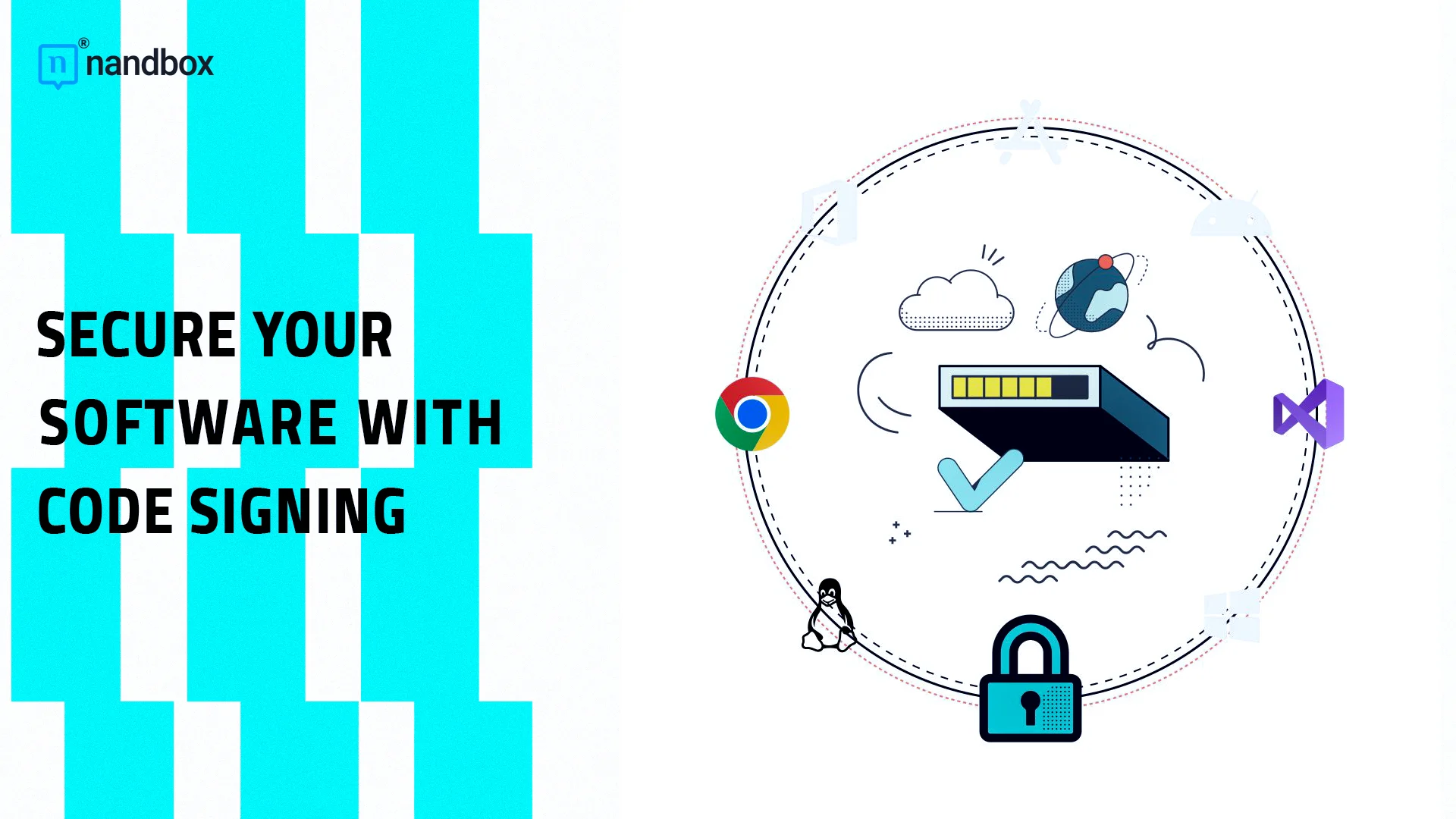Ever wonder how you know if the app you just downloaded isn’t going to secretly steal your data or crash your computer? That’s where code signing comes in. It’s like a digital fingerprint and a seal of approval all rolled into one, making sure the software you’re using is legit and hasn’t been tampered with.
Read on below and see how it fosters trust in secure applications.
The Foundation of Code Signing
Ever worried whether the program you recently downloaded will covertly pilfers your info or causes computer crash? Code signing helps with this. It’s like a digital fingerprint and a seal of approval all combined to ensure the program you’re running is legitimate and unaltered.
See how it builds confidence in safe apps by reading on below.
The Base of Code Signing
Digital signature of executable files and scripts is a cryptographic technique. Two main goals of this procedure are It first confirms the software developer’s identity, therefore guaranteeing that the claimed source is the origin of the program. Second, it guarantees that since the code was signed, it has not been changed or tampered with, therefore stopping harmful additions.
Consider it as a digital seal of validity akin to a notary’s mark on significant documentation. Signing their code, developers are effectively stating, “This is my work, and I stand behind it.” veribly.
The method depends on public key infrastructure (PKI), in which authors sign their code using a private key and then release a public key for user verification. This produces an intact chain of trust that is challenging for malevolent actors to break.
To implement code signing, developers first need to obtain a certificate from a trusted Certificate Authority (CA). Fortunately, this process doesn’t have to break the bank. You can explore application and code signing certificates from a trusted provider like SSLTrust for an affordable option. In no time, you can digitally sign your software and start building trust with users.
Hardware Security Modules
Modern code signing relies more on hardware security modules (HSMs) to protect private keys. These customized devices create a highly secure environment for keeping cryptographic keys, considerably lowering the danger of illegal access or loss. Given this exceptional protection, prominent enterprises frequently invest in HSMs because they provide a level of security that ordinary software-based storage cannot match.
The HSM technique prevents an attacker from compromising a development workstation and stealing signing keys. However, even if the entire development network is compromised, the keys remain secure within the HSM’s hardware fortress.
Time Stamping
One sometimes ignored feature of code signing is time stamping. How does this work? When code is signed, it includes a timestamp issued by a trustworthy authority. This demonstrates that the code was signed when the certificate was still valid, so the signature is valid long after the certificate expires.
Consider this scenario: a software company releases an application and signs it with a certificate that will expire in two years. Without time stamping, users would have to download a new version of the software whenever the signing certificate expired. Time stamping eliminates this necessity. Allowing the chain of trust to continue indefinitely.
Extended Validation Code Signing
Extended Validation (EV) Code Signing certificates represent the highest level of code signing authentication. These require rigorous verification of the organization’s identity, including physical address verification and confirmation of business documentation. Microsoft’s SmartScreen filter and other security systems typically grant immediate reputation to applications signed with EV certificates. It reduces false positive security warnings that might otherwise deter users from installing legitimate software.
Cloud Revolution in Code Signing
Cloud-based services have emerged as a major changer for enterprises dealing with traditional code-signing infrastructure. These solutions provide full benefits, including centralized key management, automated signing processes, and strong audit recording. This makes them especially useful for firms that have scattered development teams or are integrating this into CI/CD workflows.
For example, a development team can automatically sign builds as part of their automated release process. Ensuring that no unsigned code reaches production while keeping complete logs of who signed what and when.
Code Signing in the DevOps Era
The rise of DevOps and continuous deployment has transformed code signing workflows. Modern development teams need to balance security with speed, integrating code signing into their automated build and deployment processes without creating bottlenecks.
Solutions like signing service APIs and automated certificate management help streamline these processes. Teams can set up systems where code is automatically signed during the build process, with proper controls and audit trails in place to maintain security.
Platform-Specific Considerations
Various operating systems handle this differently. Apple, for example, takes a particularly stringent approach with macOS and iOS, requiring all applications to be signed and notarized before running without security warnings. Windows, on the other hand, has its own Authenticode system, which has expanded to incorporate capabilities like as dual signature for both the SHA-1 and SHA-256 protocols.
Mobile platforms also have their own requirements. Android apps must be signed before being published on the Google Play Store, whereas iOS apps require certifications from Apple’s developer program.
Developers that want to target numerous platforms must have a good awareness of these platform-specific characteristics.
Addressing Common Code Signing Challenges
Despite its benefits, it also comes with its own set of challenges. Among these is the protection of private keys, as any compromise could allow malicious actors to sign unauthorized code as legitimate. To mitigate this risk, organizations must implement strict key management procedures that include regular key rotation and access controls.
Another challenge involves managing multiple signing certificates. A typical enterprise might need separate certificates for different platforms—Windows executables, macOS applications, and mobile apps, each requiring their own. Since every platform maintains unique requirements and verification processes, the overall code signing workflow becomes significantly more intricate.
The Role of Code Signing in Supply Chain Security
Recent high-profile software supply chain attacks have highlighted the importance of verifying not just the final application but all its components. Code signing plays a crucial role in securing the software supply chain by providing cryptographic guarantees about the origin and integrity of code components.
This verification is especially crucial in modern development, where applications frequently incorporate third-party libraries and dependencies. Through code signing, organizations can validate these components, ensuring their authenticity remains intact from the original developer through to the final application deployment.
Best Practices for Implementing Code Signing
Successful code signing implementation requires a comprehensive approach.
- Organizations should establish clear policies for certificate procurement, storage, and usage.
- Regular audits of signing processes and access controls help maintain security.
- Training developers about proper code signing procedures and the importance of key protection is equally crucial.
- Automated monitoring systems should be in place to detect any unauthorized signing attempts or certificate expiration issues.
Regular backup and recovery procedures for signing certificates can’t be ignored, too. These ensure business continuity in case of hardware failures or other incidents.
Conclusion
It remains a cornerstone of software security, adapting to new problems and requirements. Organizations that invest in secure code signing infrastructure and processes today will be better positioned to retain their users’ security and trust in the future.
The technology evolves, but the essential premise remains the same: in a world where software can originate from anywhere. Code signing offers the confidence and verification methods required for secure, dependable software distribution. Looking forward, advancements in this critical component of software security will continue to emerge, improving the trust between developers and consumers.
nandbox App Builder
It is an important step in maintaining the integrity and authenticity of software applications. By digitally signing code, developers assure users that the software has not been tampered with or altered, encouraging trust and security. This is particularly crucial for mobile apps, where user trust is critical. With the nandbox App Builder, organizations can design unique apps that include it as part of the development process. This assures secure app delivery and adherence to platform specifications. Businesses that utilize nandbox not only streamline app development but also increase user trust and protect their applications from potential attacks, making code signing an essential component of modern app security.





